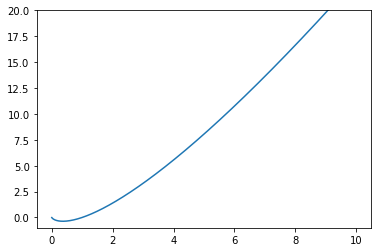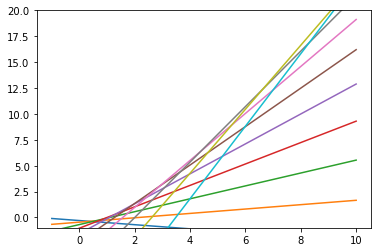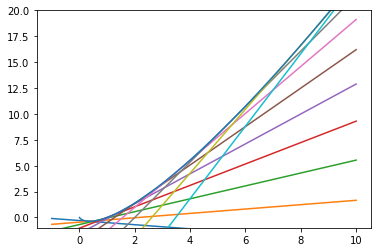Any individual function can be represented in several different ways. The common way that these functions are visualized is as a collection of points where for every
This method of taking a function and looking at it's Legendre transform has been a valuable technique in physics. It acts as the glue between Lagrangian and Hamiltonian mechanics, and it's the link between the various representations of the equation of state in thermodynamics (ie. Energy
The legendre_plotter script requires the sympy, numpy, and matplotlib libraries. Please have these packages installed in your local environment prior to running the program. The script will plot three graphs per run, the traditional point representation, the line geometric representation, and a plot of both representations. To change the viewing window, the number of lines ploted, or the range of slopes plotted, the parameters on lines 13:19 of the main script can be adjusted. To change the function whose transform is computed and plotted, modify line number 29 y = (1/10)*x**2 # Modify this line to plot your own function. When modifing the function, because this script is only designed to handle 1D functions, please make your expression using the x sympy symbol and assign your created sympy expression to the parameter y.
YMIN = -20
YMAX = 20
XMIN = -15
XMAX = 15
NUMB_LINES = 20
SLOPE_MIN = -4
SLOPE_MAX = 4global parameters that can be adjusted to change the window, number of lines, and range of slopes plotted
output of the script using the function
- Callen 1985 Thermodynamics and an Introduction to Thermostatistics
- introduction to sympy
- legendre transformations


